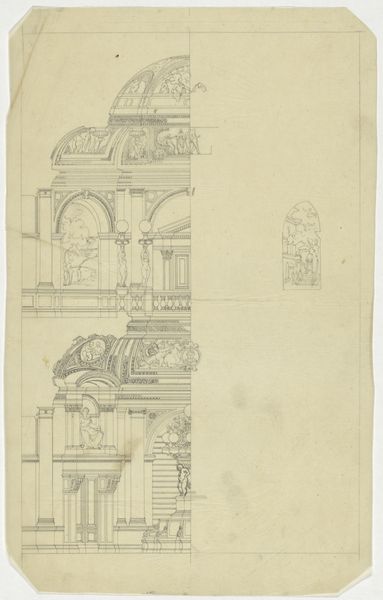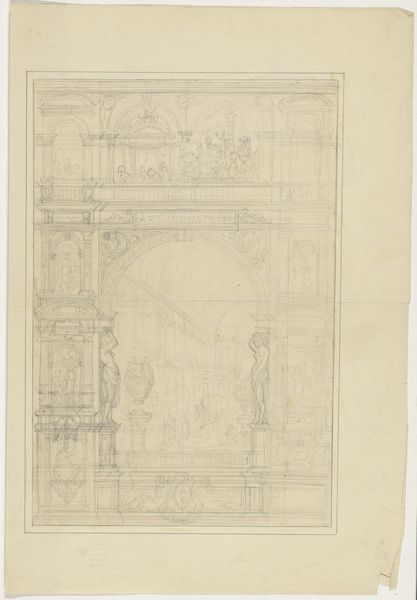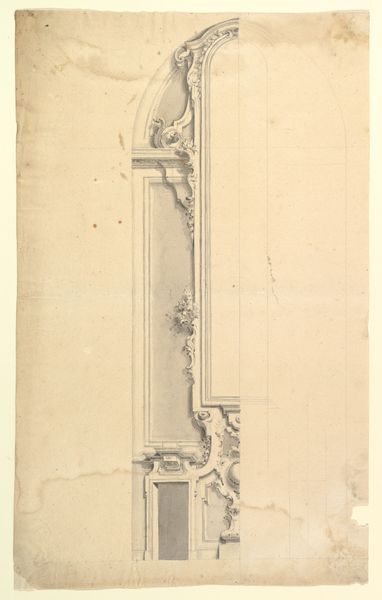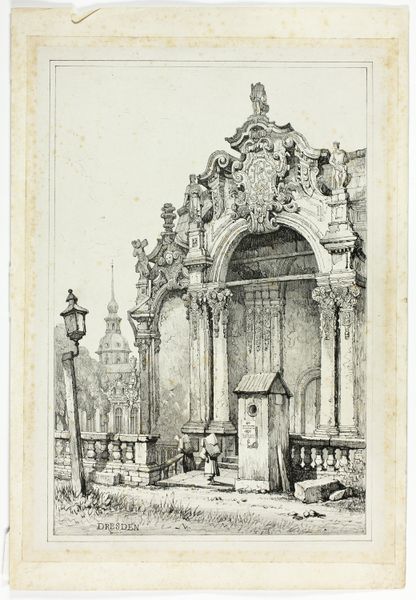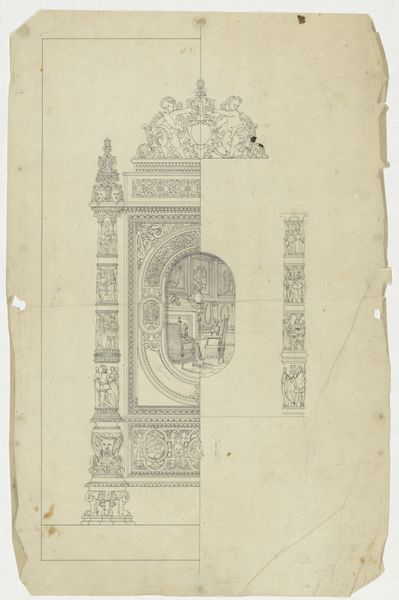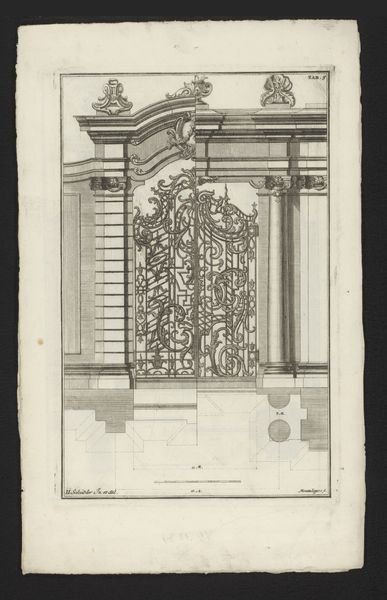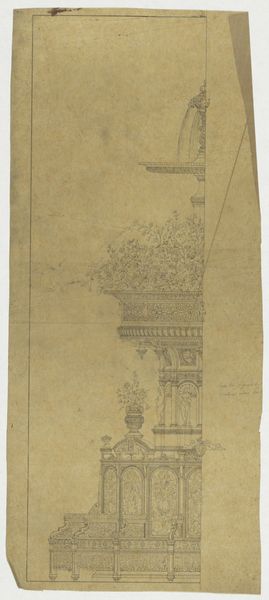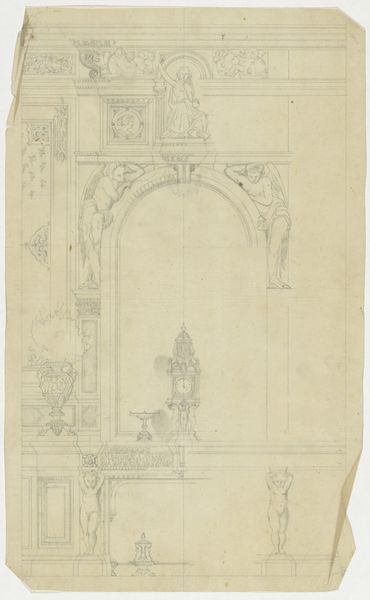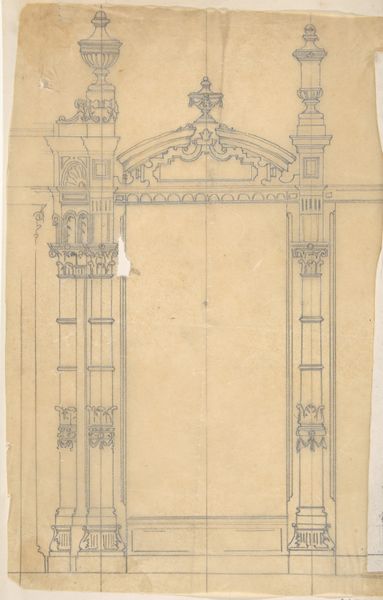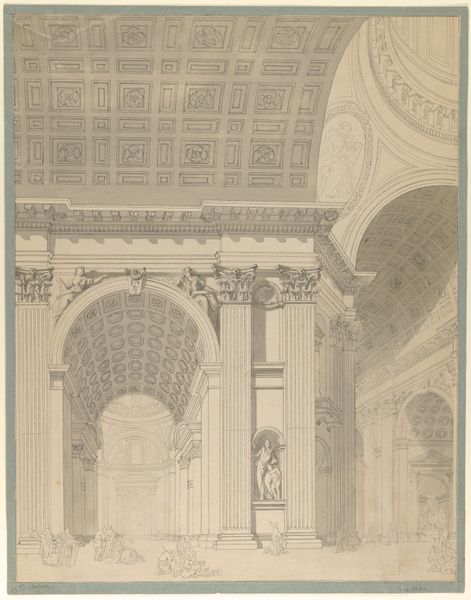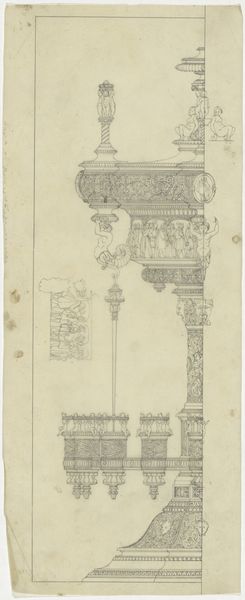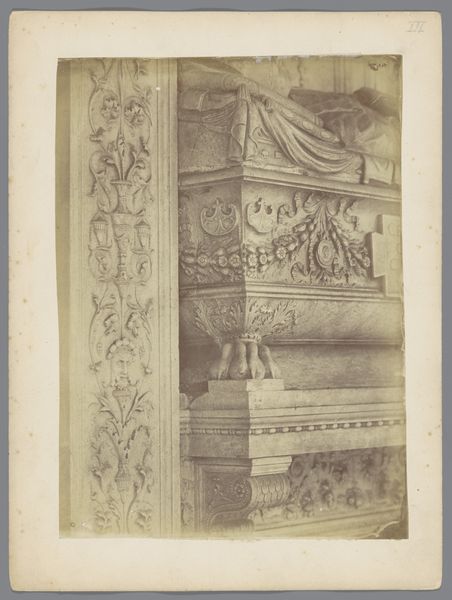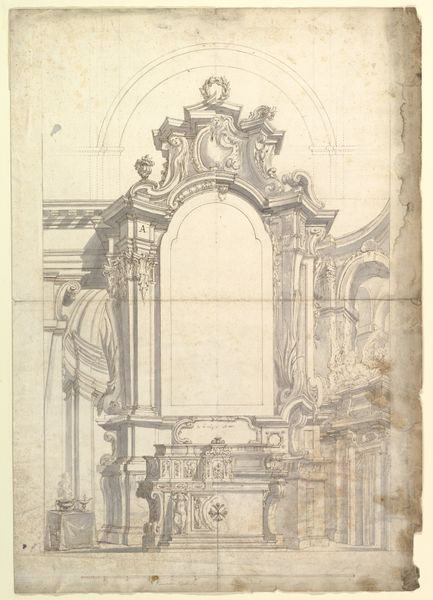
Design for a Stage Set at the Opéra, Paris 1830 - 1890
0:00
0:00
drawing, print, architecture
#
drawing
#
neoclacissism
# print
#
cityscape
#
architecture
#
building
Dimensions: Irregular sheet: 11 15/16 x 8 3/8 in. (30.3 x 21.3 cm)
Copyright: Public Domain
Curator: Right now we're looking at Eugène Cicéri's "Design for a Stage Set at the Opéra, Paris," made sometime between 1830 and 1890. It's a drawing, maybe a print, a vision in lines and shading. Editor: It gives off a peculiar feeling. Melancholy, maybe? Despite the grand scale of the architecture, it feels muted, like a memory fading into grey. I feel transported to a past of restrictive class dynamics. Curator: Exactly! Neoclassicism in the 19th century was, well, a statement. Cicéri, designing sets, wasn't just creating pretty backdrops. He was conjuring an idealized past, a lineage of power, right there on stage. Think about who was experiencing that theater - a privileged elite gazing up at echoes of Roman grandeur! Editor: And what was that supposed to communicate? Power? Permanence? An imagined link to a glorious past, deliberately masking the tumultuous realities of 19th-century France? The architectural language is so explicit. I imagine these forms replicated a rigid social order, reaffirming class distinctions. Curator: Possibly... but also it was the stage for fantasies. Escapism from everyday life where things probably weren't so rosy. What’s really interesting to me are the grid lines which reminds me of how, for an artist, you can use the real world to then abstract and project meaning on it. Editor: It's all tied in together, isn't it? That tension between escapism and the assertion of power structures. This wasn’t neutral space - stage design participates in a very powerful visual vocabulary. These set designs naturalize a political ideology and communicate a kind of authority. It suggests art serves agendas far beyond aesthetics. Curator: Absolutely. Cicéri gave material form to not just a space for illusion but he solidified the political narrative that architecture implies. And this single piece of artwork illustrates exactly that! Editor: Art's ability to embed, naturalize and aestheticize dominant narratives can so often conceal or mystify injustice. Eugène Cicéri's “Design for a Stage Set at the Opéra, Paris” is just that. The neoclassical imagery represents and reaffirms the dominance of wealthy men in the late nineteenth century.
Comments
No comments
Be the first to comment and join the conversation on the ultimate creative platform.
